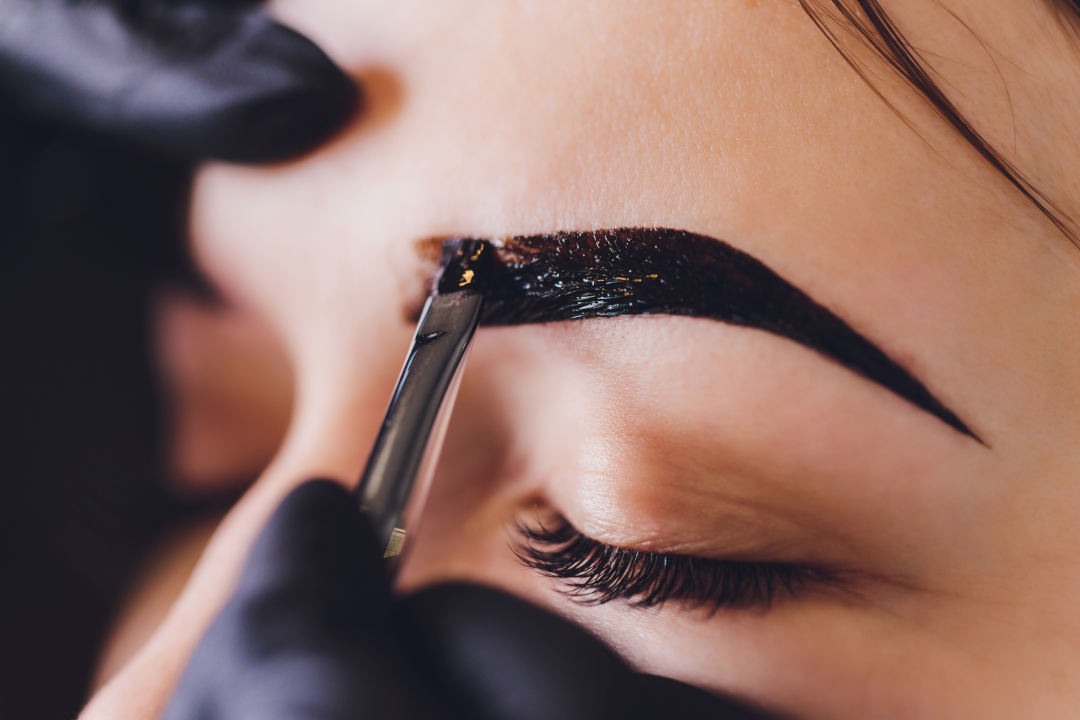SKIP TO:
- What is Henna Eyebrow Dye?
- Benefits of Henna Eyebrow Tinting for Gray or Mature Brows
- Is Henna Eyebrow Dye Safe? Potential Risks and Side Effects
- How to Safely Use Henna Eyebrow Dye
- Frequently Asked Questions
- Conclusion
Henna eyebrow dye is a popular natural alternative to chemical brow dyes. For older women and those with gray brows, henna offers a gentle way to enhance eyebrow color, define the face, and frame gray hair beautifully. In this guide, we’ll cover what henna eyebrow dye is, its benefits, potential risks, and safety tips to help you decide if it’s the right option for you.
What is Henna Eyebrow Dye?
Henna eyebrow dye is a semi-permanent stain made from the leaves of the henna plant and other natural ingredients. Traditionally used for body art and hair coloring, henna has now become a popular option for brows. It works by tinting both the hair and, in some cases, the skin beneath the brow, giving the appearance of fuller brows.
Henna usually lasts 2–4 weeks, depending on your skin type and beauty routine. While it shows stronger results on darker hair, it can still add definition to lighter or gray eyebrows when applied carefully.
Benefits of Henna Eyebrow Tinting for Gray or Mature Brows
- Natural alternative: Unlike chemical dyes, henna is plant-based and free of harsh ingredients.
- Gentle enhancement: Helps define brows without overwhelming them, ideal for women with thinner or grayer hair.
- Low maintenance: Results typically last 2–6 weeks, reducing the need for daily filling.
- Customizable shades: Available in a variety of tones to complement different hair colors and skin tones.
Many older women find henna especially useful for giving their brows subtle definition that balances silver or gray hair while avoiding the harsher look of permanent dyes.
Is Henna Eyebrow Dye Safe? Potential Risks and Side Effects
While generally safe, henna eyebrow dye does carry some risks:
- Skin sensitivity: Possible irritation, itching, or redness, especially for those with sensitive skin.
- Allergic reactions: Always perform a patch test before full application.
- Staining: Can stain skin or clothing if left on too long.
According to the American Academy of Dermatology, patch testing is essential when using any dye product to avoid allergic reactions.
How to Safely Use Henna Eyebrow Dye
Before trying henna eyebrow tinting, keep the following in mind:
- Use the right product: Choose a henna dye formulated for eyebrows, not for hair or body art.
- Read the ingredients: Avoid products with added chemicals or allergens.
- Patch test: Apply a small amount on your inner arm and wait 24–48 hours.
- Follow instructions: Apply evenly, avoid over-applying, and do not leave on longer than directed.
- Maintenance: To extend results, avoid oil-based cleansers, which can fade the dye more quickly.
Frequently Asked Questions
How long does henna eyebrow dye last?
Typically 2–4 weeks on hair and up to 1 week on skin, depending on your skin type and aftercare.
Does henna work on gray eyebrows?
Yes, but results may be softer than on dark hair. Multiple applications may help deepen the color.
Can henna cause allergic reactions?
Yes, though uncommon. Always perform a patch test first to rule out sensitivity.
What’s the difference between henna and chemical brow dyes?
Henna is plant-based and semi-permanent, while chemical dyes often contain ammonia or peroxide for longer-lasting but harsher results.
Conclusion
Henna eyebrow dye can be a safe, natural option for older women looking to enhance or define their brows without chemicals. While it may not deliver dramatic results on gray hairs, it offers subtle, natural definition that complements mature beauty. Always choose quality products, test first, and follow directions carefully for the best results.
With the right precautions, henna eyebrow dye can help you frame your gray hair beautifully and maintain brows that make you feel confident at any age.

